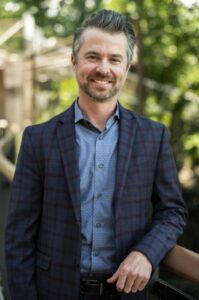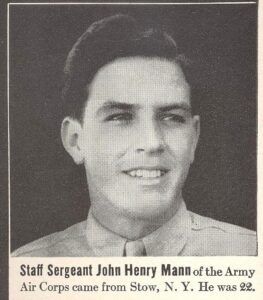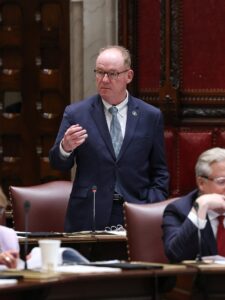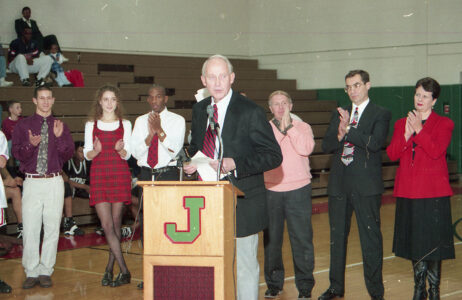BPU Hears Update On Community Fiber Project
Work is continuing for the Jamestown Board of Public Utilities on installation of a Community Fiber Project for broadband internet in the city.
During the July meeting of the BPU, Kris Sellstrom, BPU general manager of the electric division, updated the BPU board on where the project is at so far and what the next two or three months will look like, saying that about 30 miles of broadband has been installed so far. He said they are at about the halfway point for the work that is needed to be done for the project, and that work has been done in the area of Fluvanna Avenue, though he added that they are moving away from that area for a little while now.
“We’re actually going to steer away from Fluvanna Avenue for a little bit,” Sellstrom said. “We’ve got some areas that we’re going to coordinate with businesses, some we can sustain, so we’re actually going to … wrap up Newland and move on to Steele before we go back to Fluvanna.”
So far, 680 addresses in the city have had broadband fiber backbone installed, and Sellstrom said they still need to connect the back haul. Sellstrom discussed other aspects of the project with the board, including that they are looking for 20 or 30 customers to be beta testers once things are installed to make sure things are working as they should.
Sellstrom provided a packet of information to the board, beginning with things like marketing and advertising, adding that he has also been working on a website to allow people to sign up for the broadband internet. The website is not live yet as they want to wait until things are ready and it is time for things to start before getting people to sign up.
He then talked about how sign ups will work, with the ability for people to see on the website once it is live whether or not they are in the service area for the broadband internet, and if they are they can then take the next step of setting up an account and filling out all of the needed information. Four internet speeds will be provided as that is what was provided for in the grant, but there is the possibility that there will be more.
People will also be given the option on the website to schedule an installation date, and once all of that is set up the person will have had an account made and be given an account portal with all of their information and the ability to see things or change things about their service if needed. Right now, Sellstrom said this is what they are working towards but mapping of service areas still needs to be completed before those next steps.
Board member Marrie Carruba asked for an explanation of what an open line network would mean and if that meant that people could sign up for the internet through the BPU and then change to Spectrum or Windstream.
“So in a traditional internet model any provider that wants to provide service to the home would have to build their own … all this infrastructure that we’re going to build,” Sellstrom said. “So for another provider to come in, they will also have to build all of that infrastructure. As you add providers, as you normally get some competition, … there’s only so much space out there to put every single provider. So over time, your competition diminishes and you end up with one or two providers in control. This is a different approach to that.”
This approach, Sellstrom said, is more of a shared community infrastructure, meaning any ISP that chooses to provide services on that infrastructure can do so. The project will also allow for more than just broadband internet eventually, with this just being where the BPU is starting because of the grant, allowing for more types of providers as well. This will not take effect until they have customers and will happen over time, Sellstrom added.
Carrubba also suggested clarifying that for some people as it might not be completely clear with how it is worded, and Sellstrom agreed, saying they found it hard to put into words. There will also be three videos on the website to help communicate how it will work.
General manager David Leathers said they are at least a month away before they reach the public communication piece of the project.
“A lot of work continues with the physical infrastructure but also setting it up as we anticipate potential customer communications,” Leathers said. “There’s a lot of work going on.”





